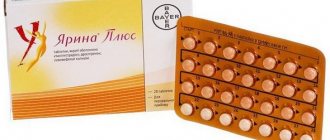When a representative of the fair sex is preparing to become a mother, she cannot even imagine what difficulties she may encounter. Of course, most pregnancies proceed smoothly and have no complications. However, in some cases, expectant mothers require urgent medical attention. Only in this case there is a chance to carry the baby to term and give birth on time. This article will tell you about what a pessary is used for during pregnancy. You will learn in what cases the use of this accessory is necessary and how it should be worn.
Pessary during pregnancy: indications
This device is an excellent alternative to suturing the cervix. It is necessary for those women who have a pathology called “isthmic-cervical insufficiency.” Many expectant mothers only learn at their next appointment with a gynecologist that there is a problem in their body.
A pessary during pregnancy is necessary for those women who have experienced premature softening or shortening of the cervical canal. In this case, the staging can be emergency or planned. This device is also recommended for use in multiple and polyhydramnios pregnancies, but not in every case. A uterine pessary may be needed by mothers with many children who are going to give birth for the fifth or more times.
https://youtu.be/19K1KbA9A_8
At what cervical length is a pessary placed?
I had two pregnancies, both times with twins. Since in both cases there was strong pressure on the cervix and constant threats, I was given a pessary 2 times. The first time it was around 25-26 weeks. The ring was plastic (Belarus manufacturer). It was painful to put it on, even more painful to take it off. There were no significant changes during wearing. Ich as usual... The urge to go to the toilet was frequent, but I’m not sure that the pessary was to blame for this: perhaps because of the twins. The second time I was fitted with a silicone product, from a German manufacturer. I didn’t feel it being installed at all. Although here a lot also depends on the doctor. The girl was in my care and told me that her gynecologist installed the wrong ring for her, and that she then suffered for a week. She went to another specialist, who removed everything for her, treated her, and re-installed the ring. There was no pain, no discomfort. Therefore, it is important here that a professional does everything.
Interesting: What does 8 9 points on the Apgar scale mean? What does it mean?
Are there any contraindications to installing a relief ring?
If a pessary during pregnancy has a planned installation method, then an inflammatory process may be a temporary contraindication. In this case, the woman needs to carry out the prescribed treatment as soon as possible and install a relief ring.
When a uterine pessary needs to be placed urgently (emergency), there are no contraindications. The only factor that can affect and interfere with the process is excessive shortening and opening of the cervical canal.
What does the device look like and how much does it cost?
The pessary ring is made of silicone or plastic. In this case, all edges of the device are smoothed and have no gaps. This is necessary in order not to damage the mucous membrane of the vagina and cervix.
The device has the shape of a circle, to which several more rings are attached. The largest base is placed on the cervix. The remaining elements are necessary to unload the bladder and rectum.
A pessary during pregnancy can be issued completely free of charge. However, this requires emergency indications. Most often, doctors, seeing softening of the cervix, recommend not to delay and to buy a medical device called a “pessary” yourself. The price of one ring can vary from 500 rubles to several thousand. It all depends on the chosen manufacturer, material and size of the device.
Installation of a pessary
The device is installed on an outpatient basis, at an appointment with the attending physician in the antenatal clinic. The procedure does not take much time and is practically painless. But you need to prepare for it in advance. The installation process itself may vary somewhat - it all depends on the type, type, and shape of the vaginal ring.
How to prepare for manipulation:
- Before introducing a pessary, any diseases of the genitourinary system (infectious, inflammatory) must be cured - vaginal suppositories are prescribed systemically or for prevention.
- The birth canal is first washed with chlorhexidine.
- If a pregnant woman’s uterus is in good shape, 30–40 minutes before the procedure, she is given an antispasmodic orally or intramuscularly (in a prophylactic dosage) - No-shpu, Papaverine, Ginipral - so that if a foreign object (unloading ring) gets into it, the uterine muscles do not start actively contract.
- Immediately before installation - 10-15 minutes - you must visit the restroom, otherwise the contents of the bladder and colon will impede the advancement of the ring.
Procedure for introducing (installing) a pessary:
Recent Entries
Is it possible to give a mirror: how to protect yourself from bad omens It became known about the influence of cell phone towers on human health Is it possible to eat bananas bought in Russia?
- The patient sits in a gynecological chair.
- The doctor lubricates the pessary with oil (mainly glycerin, but for additional disinfection and a slight analgesic effect, Levomekol ointment can be used as a lubricant) to improve glide.
- Using the wide base and lower part, he inserts the uterine pessary into the vagina, then moves the second half-ring back to the posterior fornix.
- In the vagina, the silicone and plastic pessary is bent and rotated so that the cervix is located inside the central opening of the device, and the base of the ring is directed towards the anterior pubic symphysis (the curvature and smaller diameter of the ring are facing upward).
Depending on the doctor’s instructions, different types of obstetric pessaries are used, which differ in the support they provide to the cervix
Installation of an obstetric pessary does not require the use of anesthesia or painkillers - only antispasmodics. If the ring was fixed correctly, it is practically not felt inside. Thanks to specially made grooves on the sides, it does not irritate either the urethra or the rectum.
The procedure takes literally a few minutes. At the time of installation itself and for a short time after, unpleasant or not very strong pain may occur. After the ring takes the intended physiological position, they quickly pass.
Video: technique for installing and removing the obstetric pessary Juno (Simburg)
Installation of the unloading accessory
The installation of a pessary during pregnancy takes place within the walls of a medical institution. You will not be able to carry out such manipulation on your own. The patient is located on the gynecological chair, and the doctor at this time carries out preparations.
Installation of the relief ring must be carried out under sterile conditions. Most often, doctors use disposable gloves for this. An obstetric pessary is lubricated with Vaseline or glycerin ointment and inserted into the vagina. The doctor feels the cervix and places a ring on it. After installing the device, the woman remains under the doctor’s supervision for a few more minutes, after which she can go home.
What is the remedy for?
Let us dwell in more detail on why exactly a pessary is needed during pregnancy. The fact is that not all expectant mothers fully understand this. Not much evidence:
- suture failure after surgical treatment of isthmic-cervical insufficiency;
- prevention of ICN.
These are exactly the conditions where the cervix is very soft or short and therefore dilates prematurely, causing miscarriage or labor.
Sometimes necessary for prevention
The ring allows you to preserve the process of bearing a child and prolong a pregnancy that is in danger of failure. Often the device has to be installed when carrying twins or triplets. It prevents premature birth in women diagnosed with ICI and those carrying multiple pregnancies. However, this device should not be the only treatment for ICI.
An unloading obstetric pessary allows you to keep the cervix closed, relieve tension from it and prevent premature softening. In addition, the pressure on the cervix is reduced.
Many women are very worried when they are prescribed a pessary during pregnancy, look for photos of the device on the Internet and read reviews of those who have encountered the same problem. At the same time, it is with the obstetric ring that the process of bearing a baby will go smoothly.
However, there are several contraindications to ring installation. First of all, there is a suspicion of a frozen pregnancy. In addition, the procedure is prohibited if an inflammatory process appears in the genitals, or if bloody discharge appears from the vagina.
Previously, it was possible to suture the uterus only from the 20th week of pregnancy, since anesthesia had to be used. Nowadays, pessary installation is possible during earlier pregnancy. You just need to choose a certain type of ring. But most often the device is installed after 20 weeks. Usually between 28 and 33 weeks.
First of all, it is necessary to prepare the genital tract. To do this, it is necessary to carry out sanitation.
If there is any infection (thrush, for example), it will worsen while wearing the ring. Usually, the doctor prescribes vaginal suppositories for treatment or prevention, and only after that the vaginal ring is installed.
The woman empties her bladder and then sits in the gynecological chair. The doctor carefully inserts the ring through the vagina and installs it, after bending it.
Before installation, the ring is lubricated with glycerin or any other moisturizer to facilitate its insertion into the vagina by increasing slip.
Woman feels discomfort when moving
Everyone’s sensitivity threshold is different, so during pregnancy, some girls will think about whether it hurts to put on an obstetric pessary. Sometimes girls report severe pain, but doctors say that this is normal discomfort and psychosomatics. The discomfort, although unpleasant, is bearable.
If the uterus is toned or highly sensitive, then half an hour before the procedure you need to take an antispasmodic. This will make it easier to move the installation of the ring. Doctors do not use anesthesia for this procedure. During pregnancy, a woman usually does not experience pain after installing a pessary.
It is necessary to pay special attention to the care of the device. After installation, the doctor tells the woman exactly how to care for the pessary during pregnancy. First of all, you need to maintain physical peace. Having sex is prohibited. Sometimes you have to use vaginal suppositories to prevent the development of sexually transmitted infections.
The doctor must monitor the condition of the vaginal microflora, so a smear is taken every 3 weeks. You will also have to regularly go for a gynecological examination so that the doctor monitors the correct placement of the device and possible complications. You should not touch the pessary yourself or try to adjust or remove it.
The expectant mother will feel the ring when changing position
Usually women quickly get used to vaginal rings. They do not cause discomfort and are almost not felt. However, during pregnancy, many people worry about whether the ring (pessary) might fall off. Yes, this happens. But this is rather an exception to the rule.
Usually, the main reason for this is that the ring is too large or the installation rules are not correct. When the device moves out of place, the woman immediately begins to feel that it is pressing.
The expectant mother will feel it when changing position, it will be uncomfortable for her to sit.
If your doctor has selected the right ring size and you follow all the instructions, there is no reason to worry. The likelihood that the device will fly off is minimal.
Sometimes girls feel that the pessary is set too low, because when washing it you can feel it. If you feel the sensations described above, you should not touch the vagina again.
The main thing is not to forget about regular examinations with your gynecologist.
To manufacture the unloading obstetric ring, safe, hypoallergenic, biological materials are used. Usually special plastic or silicone, elastic, flexible, so it easily adapts to the female anatomy. At the same time, it is quite dense. The pessary has a shelf life during which it is sterile. Please note that the device is disposable.
Sometimes you have to see a doctor ahead of schedule. In some cases, vaginal discharge may occur while wearing the device. You should immediately inform your doctor about this. Discharges are:
- bloody, cinnamon;
- greenish or yellow;
- liquid, odorless and colorless.
Be aware that a pessary installed during pregnancy very often causes an increase in leucorrhoea. This is a completely natural phenomenon.
But some time after the procedure, clear liquid discharge appears in large quantities. This phenomenon means that the body is trying with all its might to get rid of a body that is foreign to it.
If you are still worried that something has gone wrong, it is worth taking a water leak test.
Bloody or brown discharge may occur immediately after the ring is inserted. They are usually quite scarce. There is no need to worry about this. If they occur while wearing the ring, you should immediately call a doctor.
If there is discharge, consult a doctor
Greenish and yellow discharge indicates a bacterial infection. It requires mandatory treatment. In this case, the doctor prescribes therapy. If the course of treatment is ineffective, the ring will have to be removed for a while.
Violation of the integrity of the amniotic sac is characterized by copious liquid discharge without odor or color. Sometimes a faint sweetish odor appears. This condition also requires immediate treatment.
After removing the vaginal ring, mucous discharge may appear. This is the release of cervical mucus that has accumulated while wearing the device. There is a significant lack of adaptation.
This is also a reason to call the gynecologist.
During pregnancy, you need to know at what weeks the pessary should be removed.
If the process of bearing a child goes well and no complications arise, then the obstetric ring should be removed at 38 weeks. Sometimes the birth process begins in the near future.
The removal procedure is as quick as installation. After the manipulation, it is necessary to sanitize the birth canal.
Sometimes during pregnancy, the doctor removes the pessary ahead of schedule. The indications are.
- The need for urgent delivery.
- The emergence of infectious gynecological pathology.
- Infection of the amniotic sac.
- Rush of amniotic fluid.
- The beginning of labor.
According to reviews on the Internet, a pessary during pregnancy allows you to carry the fetus to term as safely as possible. This is very important, because the life and development of the baby is at stake. Expectant mothers say that after having the ring installed, they worry much less about the consequences of ICI. At what time is 1st ultrasound performed?
I was treated for a too soft cervix. The pessary during pregnancy became a real salvation for me. It was just a little painful to install it, but you can be patient. The ring saved me from premature birth. It was not felt at all, so I led my usual lifestyle and worked almost until the 9th month.
I was being treated for threatened miscarriage. I read many reviews of girls who had a pessary installed during pregnancy. In the first days, my stomach hurt a lot, so I was under the supervision of doctors. A week later I stopped feeling the ring altogether. It was removed at 39 weeks, after which labor began almost immediately.
Lidiya Pekhtereva
I was treated for the threat of premature labor, and the doctor said that a pessary was necessary. There are a lot of expenses during pregnancy, so price was a deciding factor, and the cost of the method was relatively low. I wore the ring for about 10 weeks, but there was no discomfort. They removed it right before the birth. It hurt. But they managed to carry the baby calmly.
- Black red currant during pregnancy
- Coconut oil during pregnancy for stretch marks
- Fish oil during pregnancy
- What are the benefits of pomegranate during pregnancy?
- Badger fat during pregnancy - can I take it?
- Cervix during pregnancy
How to wear a relief ring?
The pessary should not be removed during pregnancy. There are no special instructions when wearing it. However, the expectant mother with such a device needs to take a smear more often to check for a bacterial infection. In rare cases, a pessary can become a breeding ground and a place for pathological bacteria to live.
It is worth noting that the relief ring is a personal hygiene item and cannot be reused by other women. If the pessary has moved from the right place, then only a gynecologist can return it back. If the device falls out completely, you need to use a new device. However, you need to reinstall it as soon as possible.
After inserting the ring, many obstetricians and gynecologists recommend being careful. So, the expectant mother needs to completely exclude sexual intercourse. If the tone increases, the ring may simply fly off, which will entail irreversible consequences.
Physical activity is also not allowed. Representatives of the fair sex should give up even light gymnastics and swimming in the pool. After installing the ring, you should not take a bath. Preference should be given to hygiene procedures in the shower.
If the pessary was installed urgently, the expectant mother may be prescribed bed rest. In this case, the woman should lie down most of the time. You can only get up when going to the toilet or shower.
Reviews about the device
The pessary during pregnancy has only positive reviews. If you are offered to install a ring and there are all indications for this, then you should not hesitate. Why are there only good reviews about this accessory?
- Possibility of quick installation. Unlike cervical suturing, the woman does not need anesthesia during the procedure. You can go home immediately after the procedure.
- No pain. The pessary is installed quite quickly and almost painlessly. Only in some cases do women feel discomfort.
- Less traumatic. A pessary, unlike suturing, allows you to maintain the integrity of the cervix. This plays an important role in subsequent pregnancies.
- Safety. The relief ring very rarely causes inflammation in the vagina. The same cannot be said about suturing.
- If uterine bleeding occurs, the pessary will detect this. The sutures tightly close the entrance to the uterus and can interfere with diagnosis.
Removing the pessary
The 38th week of pregnancy is considered an acceptable (safe for mother and baby) date for delivery. It is during this period that the pessary is removed from the vagina. The procedure for removing the ring itself is simple, painless, short and does not require special preparation. After it, sanitation of the birth canal must be carried out.
The pessary can be removed quite simply:
- A slightly bent finger is inserted into the vagina.
- In the case of a ring-shaped pessary, it is removed by gradually pulling it from the cervix by the outer edge.
- The cubic pessary is removed by pulling the thread. Before this, you need to move the sides of the cube away from the walls of the vagina, removing the suction effect of the product.
As a rule, labor begins within a few days after removing the pessary. For some this happens faster, for others it takes longer - it all depends on the characteristics of pregnancy and the physiology of each individual woman.
Before the specified dates, the pessary is removed when the expectant mother:
- during the next scheduled control, a genitourinary tract infection is detected;
- inflammation of the mucous membrane of the internal genital organs develops;
- Chorioamnionitis (infection of the amniotic sac) is diagnosed or the integrity of the sac is compromised, resulting in rupture of amniotic fluid;
- labor begins prematurely;
- there is a threat to the life of the mother and (or) child during further pregnancy.
After removing the vaginal ring, you may experience heavy mucous discharge from the vagina for some time. This is cervical mucus that accumulates while wearing it. In 3-4 days, when she comes out, everything will return to normal on its own.
As with the introduction of a relief pessary, painkillers and anesthesia are not used when removing it. A pregnant woman may experience only minor discomfort or pain during the procedure.
Installation and removal of the vaginal ring occurs on an outpatient basis; there is no need to go to the hospital for manipulations.











